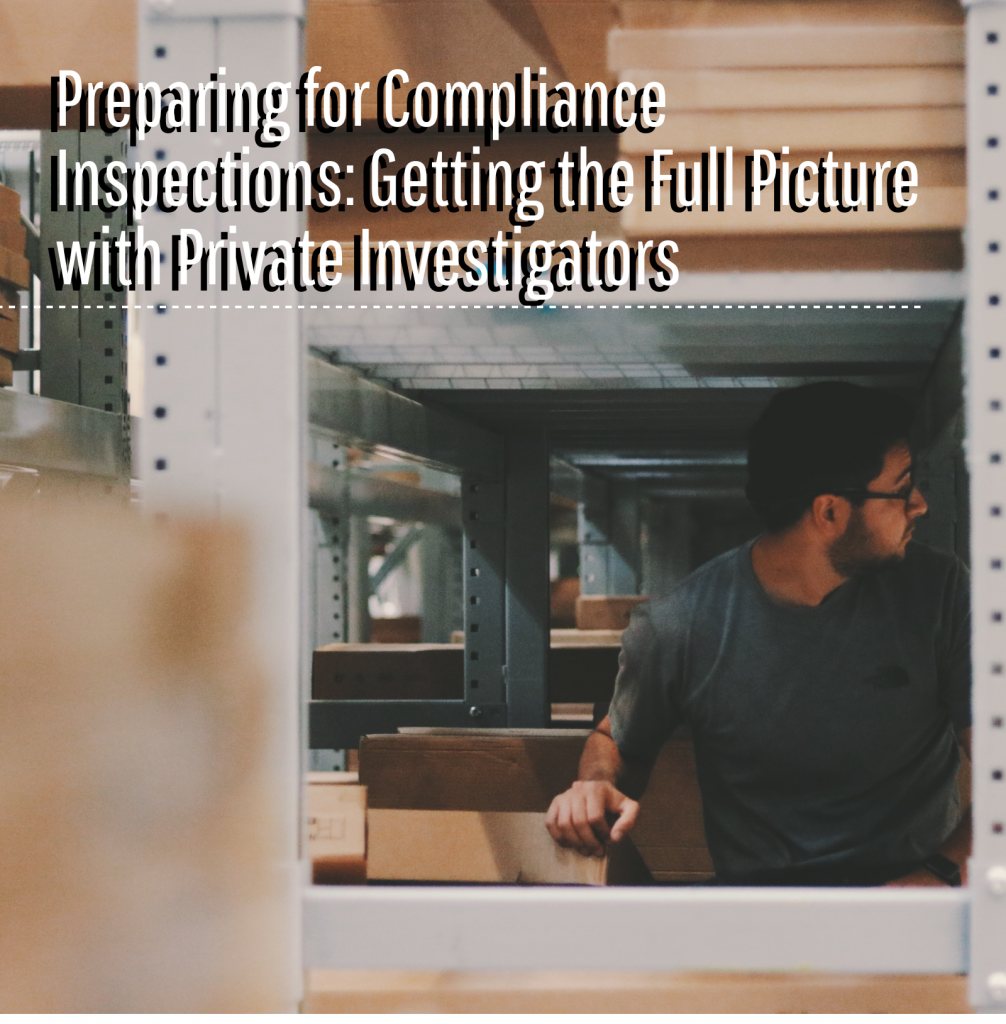How to Protect Personal Information Online in 2022
Both experts and laypersons alike have argued that in utilizing the internet for purposes of automation and convenience, we have sacrificed our security as our personal information floats in the ether. In an age where a great deal of the fraud that occurs in the United States happens in cyberspace, consumers are being cautioned more […]
Transforming Corporate Culture in Hospitality

In the hospitality industry, success and longevity have always been measured by the customer’s experience. After all, the goal of any hospitality business is providing guests and customers with quality service 24/7. Giving guests the best experience means hiring the best professionals to attend to their needs. The demand for quality staff is becoming a […]
Preparing for Compliance Inspections: Getting the Full picture with Private Investigators

With every decade that passes, a new wave of wild corporate scandals emerge—from Martha Stewart’s criminal insider trading through to Joseph Meli’s ticket ponzi scheme—and with them come a new roster of compliance legislation. No doubt, these laws are vital for keeping both consumers and businesses safe. They reflect an ever-more sophisticated world that increasingly […]
Corporate Intelligence Gathering: Using Private Investigation Firms

I wonder, does your human resources director or CEO have a private investigator on their speed-dial list? If the answer is no, then you may be missing a trick. Because today, the private investigator has become an indispensable asset in ensuring the smooth functioning of many American businesses. Often this journey begins during the company’s […]
Corporate Litigation & Private Intelligence: How Private Investigators Can Assist Attorneys
There are few skill sets more diverse than that of the legal attorney. Whatever their area of expertize, the dedicated attorney will leave no stone unturned and no legal strategy unexplored in the name of achieving the best possible outcome for their clients. However, when case complexity escalates, assets cross state lines, or witnesses fall […]
Improving Corporate Culture For Enhanced Retention and Employee Longevity
How much is employee burnout costing your business? In an era that sees many employees wear their weekly overtime and success metrics as badges of honor, keeping your team on an even keel has become a delicate dance. Burnout as a concept has certainly entered the collective lexicon as something that none of us want […]
Crushing Corporate Espionage with Private Investigations

To the average Joe, the term “corporate espionage” likely sounds like something out of a spy movie. Or, at the very least, something that only happens to huge corps in high-rise buildings. But the truth is that just about any business may have assets that their competitors covet—and if those rival businesses have a rogue […]
The 5 Tenets of Thriving Corporate Culture
These days, the idea that corporate culture is a key puzzle piece for building business success is well accepted. But culture is an illusive concept—it’s emotional, it’s instinctive—so how can we fundamentally change it? There’s no doubt that the way your team feel and think will shape how they perform. But the efforts of many […]
The Effect Of Remote Working on Corporate Culture

Is yours is one of the businesses clamoring to get your workforce back to the office? If so, then you’ll definitely want to read this. Equally, if you see working from home as the way forwards for your team, then what we’re discussing today should be on your radar too—because, thanks to the Covid-19 pandemic, […]
How Language Impacts Your Corporate Culture
Companies across America spend a fortune on curating and dispatching just the right marketing messages—in fact, last year alone, that number ran to roughly 296.4 billion U.S. dollars. But its interesting to ponder how many of these businesses and organizations pause to think about the messages they send inward. If a well or poorly-chosen tagline […]